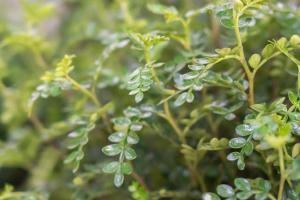How to Use Imidacloprid on Potted Plants
Potted plants are a beautiful addition to any home or garden, but unfortunately, they can be susceptible to insect and pest infestations. Imidacloprid is a commonly used insecticide that can help protect your plants from these pests. In this article, we will discuss how to use imidacloprid on potted plants to keep them healthy and strong.
Understanding Imidacloprid
Imidacloprid is a systemic insecticide that works by being absorbed into the plant's tissues, thereby making the entire plant toxic to pests. It is effective against many different types of insects, such as aphids, whiteflies, and spider mites, and can be used on a wide range of plants, including both indoor and outdoor potted plants. One of the advantages of imidacloprid is that it can provide long-lasting protection against pests without the need for frequent applications.
Application of Imidacloprid
Imidacloprid is available in several different forms, including sprays, granules, and drenches. The type of application you choose will depend on the type of plant you are treating and the severity of the pest infestation. For potted plants, we recommend using a liquid drench, as this allows the insecticide to be absorbed quickly and efficiently by the plant's roots.
To apply imidacloprid as a drench, you will need to mix the insecticide with water according to the instructions on the label. Once the solution is mixed, pour it onto the soil around the base of the plant. Be sure to follow the recommended dosage and do not exceed the amount specified on the label, as too much insecticide can harm the plant. After application, water the plant thoroughly to help the insecticide penetrate the soil and reach the roots.
Precautions
When using imidacloprid on potted plants, it is important to take certain precautions to ensure your safety and avoid damaging the plant. Always wear protective clothing, such as gloves and a mask, when handling the insecticide. Keep the insecticide out of reach of children and pets, and avoid using it in areas where they may come into contact with it.
It is also important to ensure that the plant is not already stressed or weakened before using imidacloprid. A weakened plant may not be able to tolerate the insecticide, and it may do more harm than good. Before using imidacloprid, make sure the plant is healthy and well-watered, and avoid using it during periods of extreme heat or drought.
Conclusion
Imidacloprid is a powerful tool in the fight against insect and pest infestations on potted plants. With proper application and precautions, it can help keep your plants healthy and free from pests for an extended period of time. Always follow the instructions on the label and consult with a professional if you have any concerns about using imidacloprid on your plants.

 how many times do yo...
how many times do yo... how many planted tre...
how many planted tre... how many pine trees ...
how many pine trees ... how many pecan trees...
how many pecan trees... how many plants comp...
how many plants comp... how many plants can ...
how many plants can ... how many plants and ...
how many plants and ... how many pepper plan...
how many pepper plan...
































